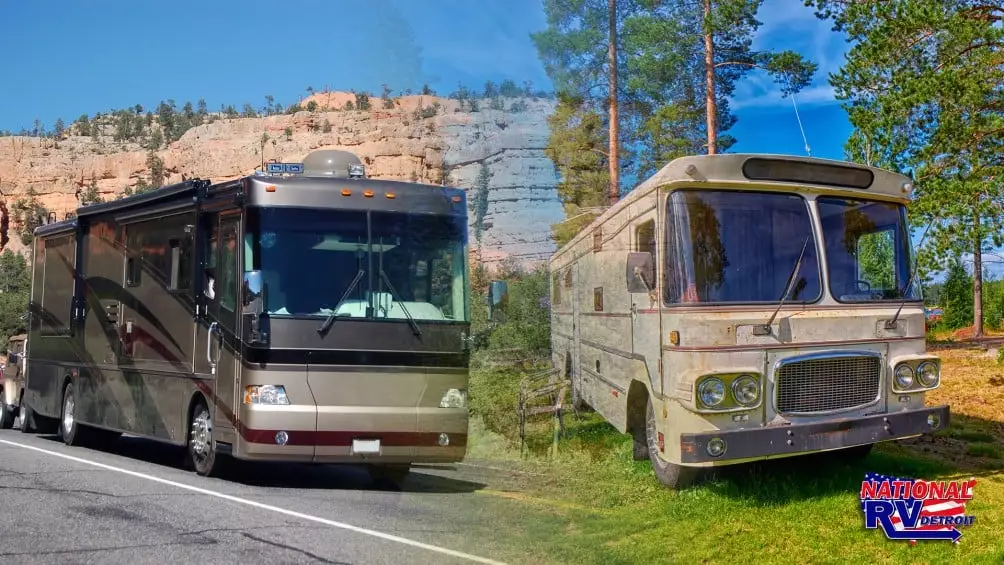Embarking on the open road with your RV is a thrilling adventure, but as your travel needs to evolve, so too might your RV preferences. Whether you’re looking for more space, upgraded amenities, or improved fuel efficiency, the prospect of upgrading your rig becomes enticing. One avenue worth exploring is RV trade-ins at the dealership. This guide will walk you through the process, offering insights into how to navigate the trade-in experience and ensure you drive away with the perfect upgraded RV for your next journey.
Understanding RV Trade-Ins:
RV trade-ins involve exchanging your current recreational vehicle for a newer model at a dealership. This process allows you to leverage the equity you’ve built in your existing RV towards the purchase of a more advanced or better-suited model. It can be a financially savvy move, as it minimizes the out-of-pocket expenses associated with buying a new RV outright.
Steps to RV Trade-Ins:
Assess Your Current RV:
Before diving into the trade-in process, thoroughly uate your current RV. Take note of its age, mileage, condition, and any upgrades or modifications you’ve made. Be realistic about its market value, as this will play a crucial role in negotiations with the dealership.
Research the Market:
Familiarize yourself with the current RV market to understand the pricing trends for both your existing RV and the models you’re interested in. This knowledge will empower you during negotiations and ensure you get a fair deal.
Select a Reputable Dealership:
Choosing the right dealership is paramount to a successful RV trade-in. Look for dealerships with a solid reputation, positive customer reviews, and a wide selection of RV models. Ensure they have experience in facilitating trade-ins and are transparent about the process.
Get Your RV Appraised:
Visit the dealership with your RV for a thorough appraisal. Dealership experts will inspect your vehicle, considering factors such as its age, condition, and market demand. This appraisal will provide the foundation for trade-in negotiations.
Negotiate the Trade-In Value:
Armed with the appraisal, engage in negotiations with the dealership. Be prepared to discuss the value of your RV and the price of the new model you’re interested in. Don’t hesitate to leverage market research to support your arguments and secure a fair trade-in value.
Explore Financing Options:
Once you’ve agreed on the trade-in value, explore financing options for the upgraded RV. Dealerships often offer financing solutions, and securing pre-approval can streamline the purchasing process.
Finalize the Deal:
Review the terms and conditions of the trade-in agreement thoroughly. Ensure all aspects of the trade-in, including the value of your RV, the price of the new RV, and any financing details, are clearly outlined. Once satisfied, finalize the deal and prepare for the exciting transition to your upgraded RV.
Benefits of RV Trade-Ins:
Cost Efficiency:
Trading in your RV can be a cost-effective way to upgrade, as it allows you to use the equity you’ve built in your current vehicle to offset the cost of the new one.
Streamlined Process:
The trade-in process is often more streamlined than selling your RV independently. Dealerships are equipped to handle the paperwork and logistics, saving you time and effort.
Access to New Models:
By trading in your RV, you gain access to the latest models with upgraded features, improved technology, and enhanced amenities that can elevate your travel experience.
Professional Appraisal:
Dealerships have experienced professionals who can provide a comprehensive appraisal of your RV, ensuring you get a fair and accurate trade-in value.
Financing Options:
Dealerships typically offer financing options, simplifying the purchase of your upgraded RV. This convenience can make transitioning to a new vehicle smoother and more affordable.
Challenges and Considerations:
- Depreciation: RVs, like any vehicles, depreciate over time. Understanding the depreciation curve of your current RV is essential for setting realistic expectations regarding its trade-in value.
- Negotiation Skills: Negotiating the trade-in value requires effective communication and negotiation skills. Be prepared to advocate for the value of your RV while remaining open to finding a mutually beneficial agreement.
- Market Conditions: Economic and market conditions can influence trade-in values. Be aware of these factors and how they might impact the trade-in process.
Conclusion:
Embarking on the journey of upgrading your RV through a trade-in at the dealership is an exciting endeavor. By carefully assessing your current RV, conducting thorough research, and selecting a reputable dealership, you can navigate the trade-in process with confidence. The benefits of cost efficiency, access to new models, and a streamlined process make RV trade-ins an appealing option for those looking to elevate their travel experiences. With careful consideration and effective negotiation, you’ll be hitting the open road in your upgraded RV in no time, ready to create new memories and explore new horizons.

